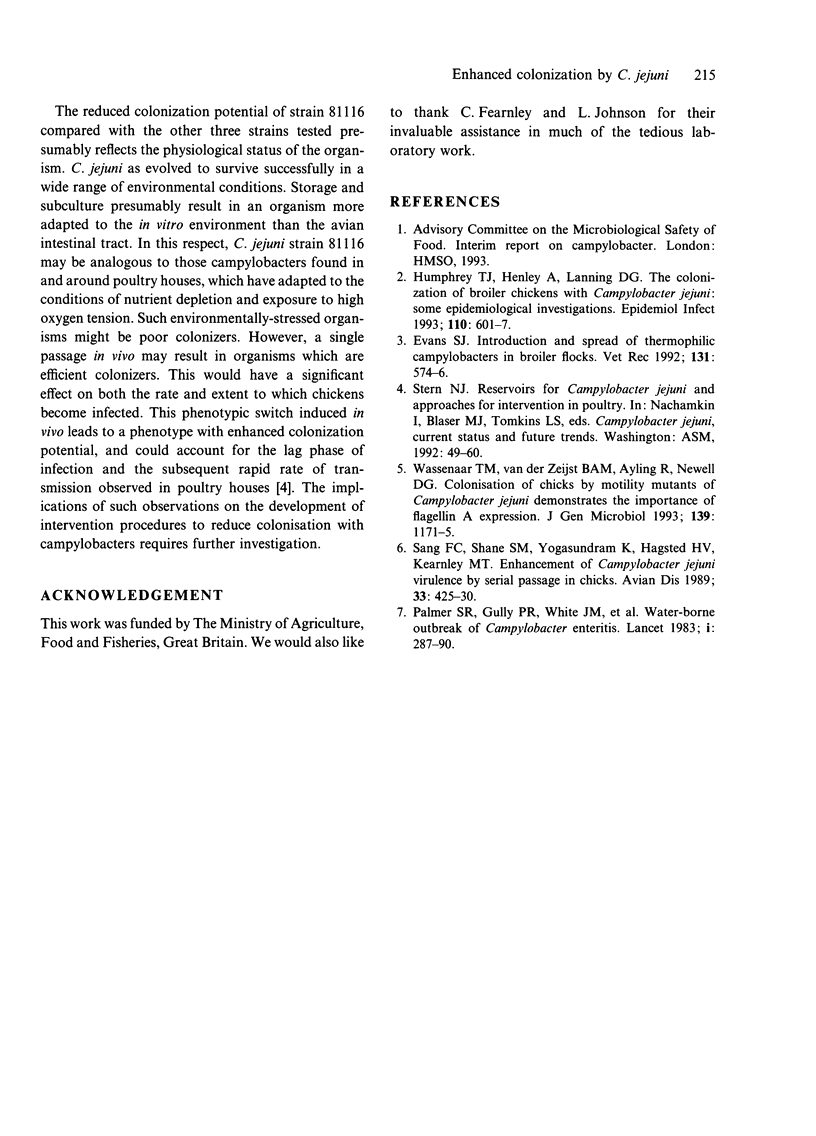Abstract
The mechanisms by which Campylobacter jejuni rapidly spreads through large broiler flocks are unknown. Recent evidence suggests that the minimum infective oral dose for 100% caecal colonization is about 10(4) cfu, which, with such a 'fragile' organism, may limit transmissibility. However, the colonization potential of laboratory-adapted strains may be anomalous compared with fresh isolates or those passaged in vivo. The colonization potential of two chicken and one human C. jejuni isolates, which were minimally passaged, have been investigated using a quantitative model of chicken colonization. There was no detectable difference between these strains but all were more efficient colonizers than a laboratory-adapted strain 81116. In addition, the colonization potential of C. jejuni strain 81116 following a passage in vivo was also determined. The results indicated this increased c. 10000 fold following a single passage in vivo, such that a dose of only 40 cfu caused maximal colonization. Enhanced colonization potential may, therefore, account for the rapid rate of transmission within large flocks.
Full text
PDF


Selected References
These references are in PubMed. This may not be the complete list of references from this article.
- Evans S. J. Introduction and spread of thermophilic campylobacters in broiler flocks. Vet Rec. 1992 Dec 19;131(25-26):574–576. [PubMed] [Google Scholar]
- Humphrey T. J., Henley A., Lanning D. G. The colonization of broiler chickens with Campylobacter jejuni: some epidemiological investigations. Epidemiol Infect. 1993 Jun;110(3):601–607. doi: 10.1017/s0950268800051025. [DOI] [PMC free article] [PubMed] [Google Scholar]
- Palmer S. R., Gully P. R., White J. M., Pearson A. D., Suckling W. G., Jones D. M., Rawes J. C., Penner J. L. Water-borne outbreak of campylobacter gastroenteritis. Lancet. 1983 Feb 5;1(8319):287–290. doi: 10.1016/s0140-6736(83)91698-7. [DOI] [PubMed] [Google Scholar]
- Sang F. C., Shane S. M., Yogasundram K., Hagstad H. V., Kearney M. T. Enhancement of Campylobacter jejuni virulence by serial passage in chicks. Avian Dis. 1989 Jul-Sep;33(3):425–430. [PubMed] [Google Scholar]
- Wassenaar T. M., van der Zeijst B. A., Ayling R., Newell D. G. Colonization of chicks by motility mutants of Campylobacter jejuni demonstrates the importance of flagellin A expression. J Gen Microbiol. 1993 Jun;139(Pt 6):1171–1175. doi: 10.1099/00221287-139-6-1171. [DOI] [PubMed] [Google Scholar]


